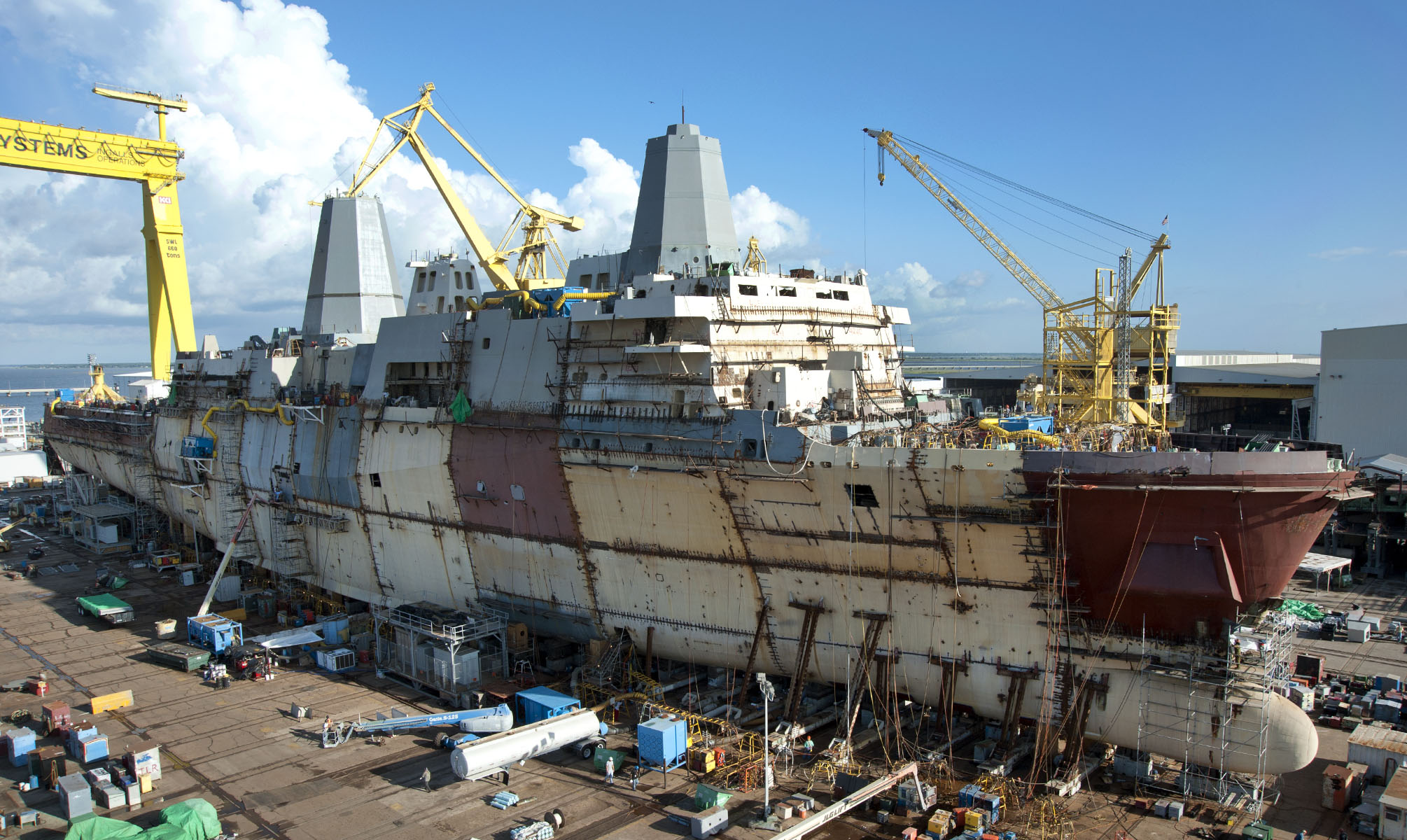
The Navy and Marine Corps were able to design an LX(R) dock landing ship replacement with greater capability for less money by starting with the higher-end San Antonio-class LPD-17 design, stripping away unneeded features and adding back in desired ones, service officials said last week.
The Navy is still working through the process, having approved the capability design document – which includes key performance parameters and key system attributes – three weeks ago and forwarded it to the Joint Staff for approval, Marianne Lyons, deputy program manager for LPD and LX(R), said at the National Defense Industrial Association’s annual Expeditionary Warfare Conference in Portsmouth, Va., last week.
The program is in the preliminary design phase now, she said, and will move to contract design in the spring and then detail design and construction in Fiscal Year 2020.
“We are working on sort of the rough arrangement of equipment,” she said, noting the Navy is working with both LPD contractor Ingalls Industries as well as General Dynamics NASSCO during the design process.
“We’re redesigning the topside – as I mentioned, we’re going from an [Advanced Enclosed Mast/Sensors] mast to a conventional stick mast. We are also incorporating all the affordability initiatives that we are receiving from industry. So when we transition out of preliminary design, which we’re looking to do sometime in the spring, transition into contract design. So contract design is where we focus on development of ship specifications … when you take the rough design information and actually start to move from system schematics to a more detailed running of piping systems, for instance. What we are trying to do is take it down to the next level to validate that we can meet the cost and inform the ship specification that will eventually go into the request for proposal to support a bid for detail design and construction.”
Capt. Bryon Johnson, head of the amphibious warfare branch in the expeditionary warfare directorate (OPNAV N953), said at the same conference that his office is still working through descoping the LPD design and deciding how much capability to add back in, but he praised the process the Navy had chosen.
When the Navy first started thinking about an LSD replacement, “there was a lot of effort to try to gold-plate the ship. We wanted it to do everything,” Johnson said.
“We wanted it to be able to carry six connectors, surface connectors, we wanted it to be able to carry a greater number of Marine Corps aircraft to support vertical takeoff capability. And once we started adding all of that up, we realized very rapidly that there was no way that we’d be able to afford essentially what was going to be a new start ship design to replace our LSD 41/49 class.”
By starting with an existing ship design and avoiding the extensive engineering cost of beginning with a clean sheet, the Navy saved “enough cost that we were actually able to take that money … and reinvest it into the platform” in the form of additional capabilities today’s LSDs don’t have, such as command and control to support split and disaggregated operations.
Johnson said the program had to stay within a cost cap but said he was confident the first ship would stay within the cost cap and deliver on time.
Lt. Gen. Robert Walsh, who served as director of expeditionary warfare (OPNAV N95) until July, said at a Marine Corps Association event last month that, in fact, the Navy and Marine Corps had far surpassed cost-reduction goals while descoping the LPD design.
“We drove that to a cost cap that was given to us by [the chief of naval operations], and we, with our industry partners, with [Naval Sea Systems Command], drove in the right requirements. And we got the most we could possibly get out of that ship, and it almost looks like an LPD-17, and we got it well under the cost cap,” he said.
Current N95 Maj. Gen. Chris Owens said the approach is “attractive to [the Office of the Secretary of Defense] and it’s attractive on Capitol Hill” due to its efficiency. Ultimately, he said, it will “give us a bigger ship, greater capability, not only in size and capacity but also in things like aviation capability, the medical capability and perhaps most importantly in this day and age of split and disaggregated operations the command and control capability that the LSDs lack. And we can only do that because the LPD-17 program is a proven one.”
Among the capabilities stripped out of the LPD design is the four-connector well deck, which is reduced to size to two connectors, and the radar cross section-reducing Advanced Enclosed Mast Lyons mentioned. The change from the enclosed mast to a traditional stick mast, however, is due to changes in the industrial base. Huntington Ingalls Industries owned a Gulfport Composite Center of Excellence in Mississippi that produced composite materials for shipbuilding, but the company announced it would close the center in 2013 due to a reduction in the DDG-1000 destroyer program. The last LPD in the class, LPD-28, will move to a stick mast, which will carry into the LX(R) program.
Lyons said the Navy is also working with industry and with the LHA amphibious assault ship program to find ways to create commonality between the big decks and the LPD-28 and LX(R) programs, as well as move to less expensive commercial technologies where possible.





